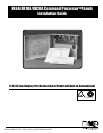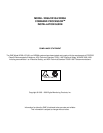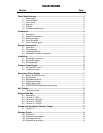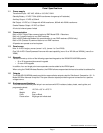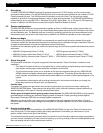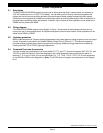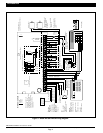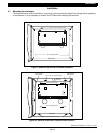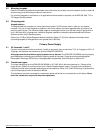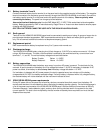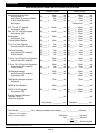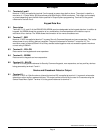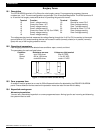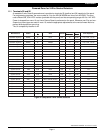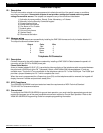
Introduction
XR6A/XR10A/XR20A Installation Guide
Digital Monitoring Products 2841 E. Industrial Drive Springfield, MO USA 65802-6310 800-641-4282
Introduction
2.1 Description
The DMP XR6A/XR10A/XR20A Command Processors are powerful 12 VDC burglary and fire communicator
panels with battery backup. The XR10A/XR20A provide nine on-board burglary zones and one on-board 12 VDC
Class B powered fire zone. The XR6A provides five burglary and one fire zone. The fire zone has a reset
capability to provide for 2-wire smoke detectors, relays, or other latching devices. The XR6A/XR10A/XR20A can
communicate to one or two DMP SCS-1 Receivers using SDLC digital dialer, 4-2, or Contact ID (CID) reporting
formats. In addition, the XR20A can communicate using the Radionics Modem IIe format.
2.2 System configurations
The XR6A/XR10A/XR20A can be programmed to operate as either an All/Perimeter system that provides one
Perimeter area and one Interior area, or as a Home/Sleep/Away system that provides one Perimeter, one Interior,
and one Bedroom area. The Bedroom area can include any protection devices the user wants disarmed during
their sleeping hours and armed in the Away mode. In addition, the XR20A can operate as a four area system.
2.3 Before you begin
Before installing the XR6A/XR10A/XR20A, we recommend you read through the entire contents of this guide.
Familiarize yourself with the features of the panel and the key points to remember during the installation. Be sure
to read and understand all of the caution statements printed in bold italics.
In addition to this installation guide, you should also read through and familiarize yourself with these other product
documents:
• XR6/XR10 Programming Guide (LT-0230) • XR20 Programming Guide (LT-0305)
• XR6/XR10 Program Information Sheet (LT-0212) • XR20 Program Information Sheet (LT-0302)
• XR6/XR10 Security Command User's Guide (LT-0226) • XR20 Security Command User's Guide (LT-0303)
2.4 About this guide
The information contained in this guide is organized into three sections: Table of Contents, Introduction, and
Installation.
• The Table of Contents at the front of this guide lists all of the headings and subheadings used throughout
each section and the page number where the information can be found.
• The Introduction section gives you an overview of the various components that go into a XR6A/XR10A/
XR20A system and diagrams some typical system configurations. This section gives descriptions of the
panel, keypads, and accessory modules and provides details on how each of them operate together in the
system.
• The Installation section begins with mounting instructions for the enclosure and takes you through the
proper way to power up the panel prior to programming.
Caution notes
Throughout this guide you'll see caution notes containing information you need to know when installing the
XR6A/XR10A/XR20A panel. These cautions are written with a bold, italicized introductory clause followed by a
detailed description of the caution. See the example shown below:
Always ground the panel before applying power to any devices:
The XR6A/XR10A/XR20A must be properly
grounded before connecting any devices or applying power to the panel. Proper grounding protects against
Electrostatic Discharge (ESD) that can damage system components.
Whenever you see a caution note, make sure you completely read and understand its information. Failing to
follow the caution note can cause damage to the equipment or improper operation of one or more components in
the system.
2.5 How to use this guide
To locate information about the installation of the XR6A/XR10A/XR20A, first go to the Table of Contents at the
front of this guide. Find the subject heading that closely describes the information you need and turn to the
section number shown to the right of the heading.
The text that follows the heading has been written to provide as much information about the subject as possible. If
you can't find the information you need under that heading, try scanning through a few of the headings before and
after and reading the text under those that sound similar.
Page 2



